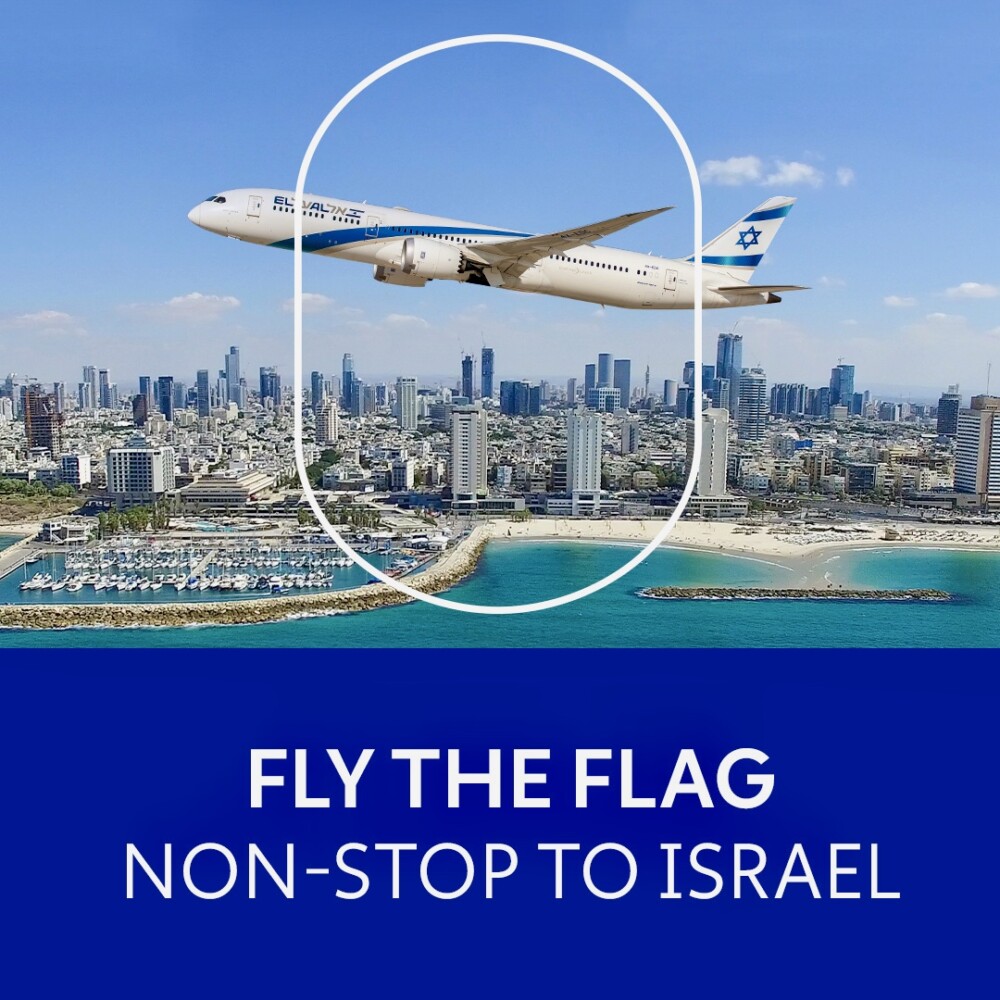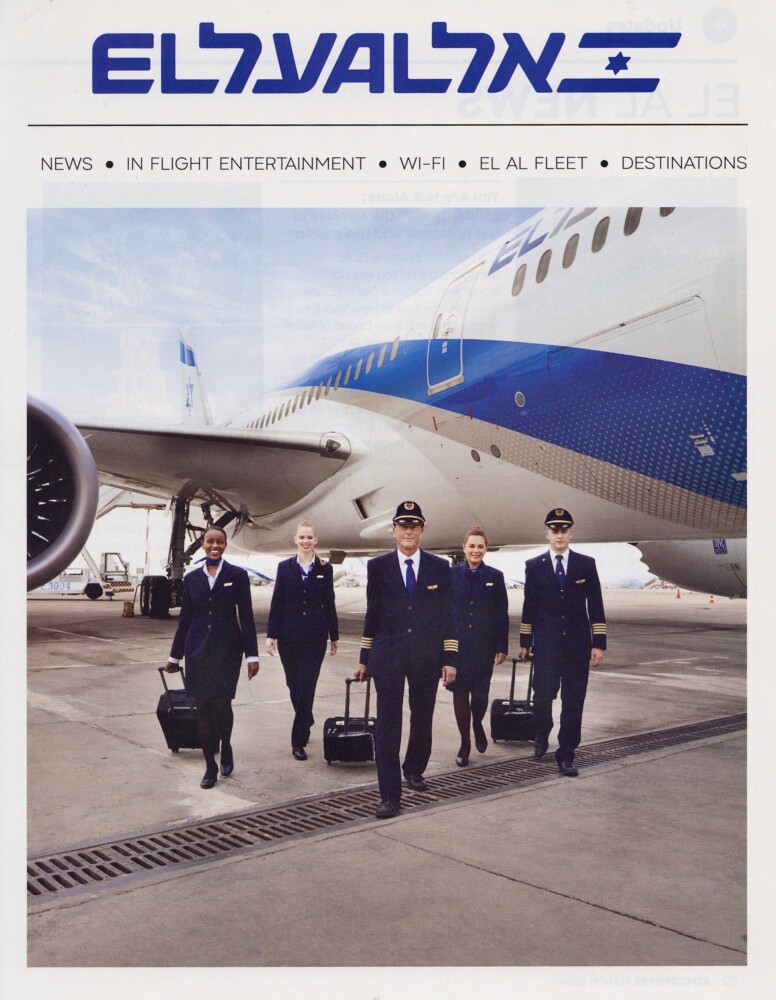EL AL – Israel’s Air Link to the World
by Marvin G. Goldman
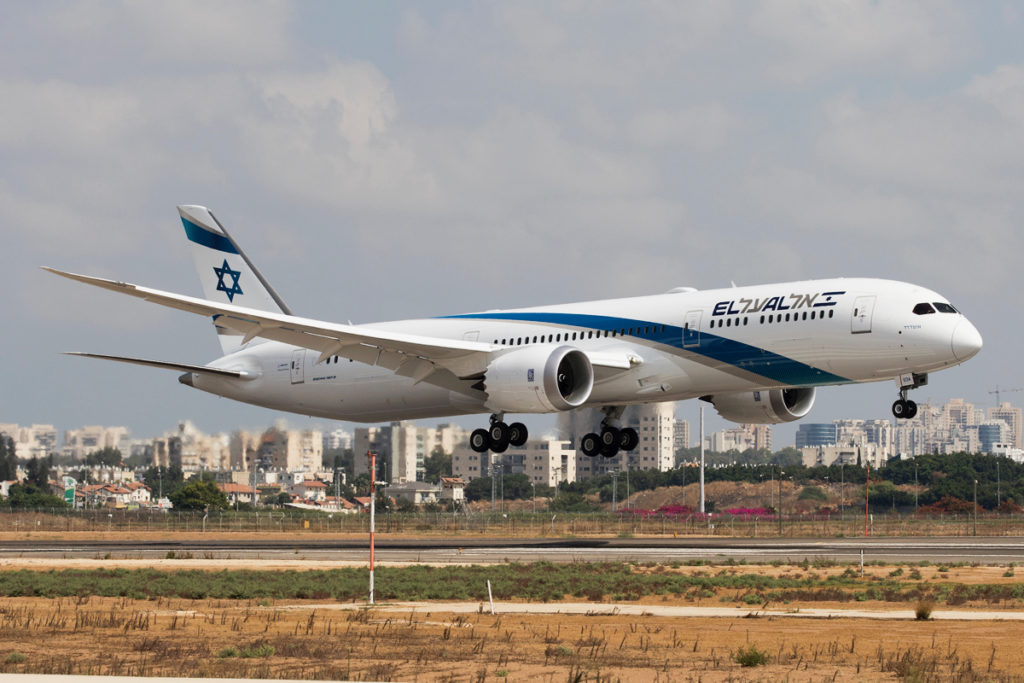
Founded in November 1948 as Israel’s national airline, EL AL operated its first scheduled flight on 31 July 1949 from Tel Aviv, Israel to Rome and Paris. The name ‘EL AL’ comes from the Bible’s book of Hosea and means ‘to the above’ or more poetically ‘to the skies’. Upon the birth of the State of Israel in May 1948, and even before EL AL’s incorporation, the EL AL name was applied to special flights by Israeli DC-4 and C-46 aircraft borrowed from military transport use. The most famous of these flights occurred in September 1948 when an ‘EL AL’ plane brought Chaim Weizmann from Geneva to Israel to become the state’s first president.
EL AL began humbly, with its first commercial passenger aircraft being two used DC-4s purchased in early 1949 from American Airlines — 4X-ACC named ‘Rechovoth’ and 4X-ACD named ‘Herzl’. These inaugurated scheduled passenger service, with most of the original pilots being airmen from the U.S., England, South Africa and other countries who flew military transports for Israel as volunteers during its War of Independence.
![One of EL AL’s first two aircraft, Douglas DC-4 ‘Herzl’, registration 4X-ACD, at Lod Airport, Tel Aviv, Israel. This aircraft operated EL AL’s first scheduled passenger flight, on 31 July-1 August 1949 from Tel Aviv via Rome to Paris. (Ozzie Goldman photo, Marvin G. Goldman [‘MGG’] collection).](http://www.israelairlinemuseum.org/wp-content/uploads/2014/08/4X-ACD-at-Lod-Airport-Ozzie-Goldman-Photo-MGGoldman-Colln-1024x578.jpg)
Initially, EL AL linked Tel Aviv with major European cities — Paris, London, Rome and Zurich. It operated from the Tel Aviv airport originally named ‘Lydda’, which was soon renamed ‘Lod’ and later named ‘Ben-Gurion Airport’ in honor of Israel’s first Prime Minister. The ‘LY’ airline code for EL AL flights actually derives from ‘Lydda’, as ‘EA’ was already in use by Eastern Air Lines.
In June 1950, with the acquisition of two additional used DC-4s from United Air Lines, EL AL started special charter flights between Tel Aviv and New York (Idlewild Airport, now JFK), and in October 1950 it launched service to Johannesburg, South Africa, via Khartoum, Nairobi and Livingstone.
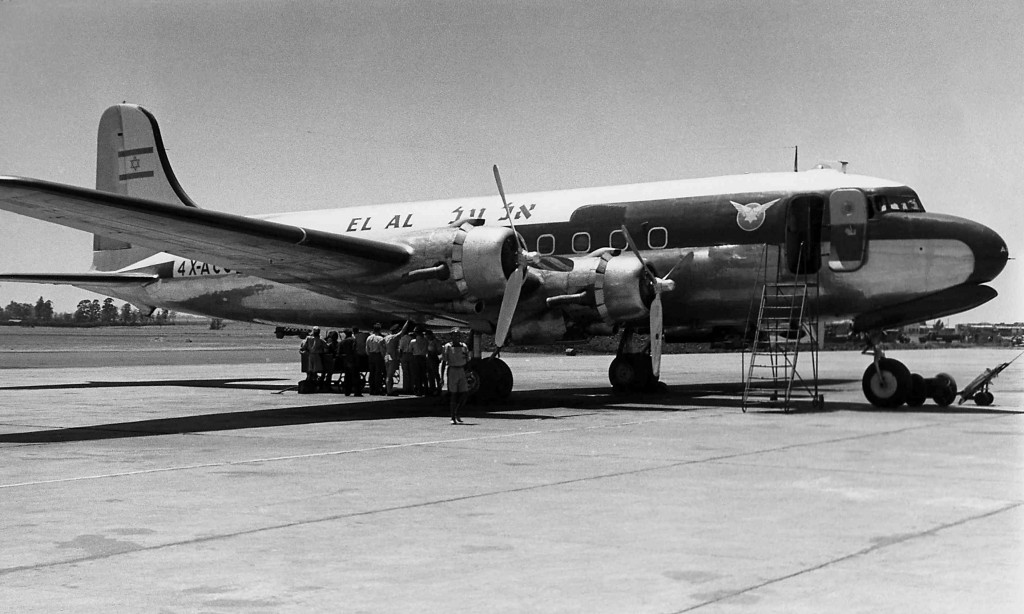
Meanwhile, cargo operations to Europe started, utilizing C-46s converted from military transport use.
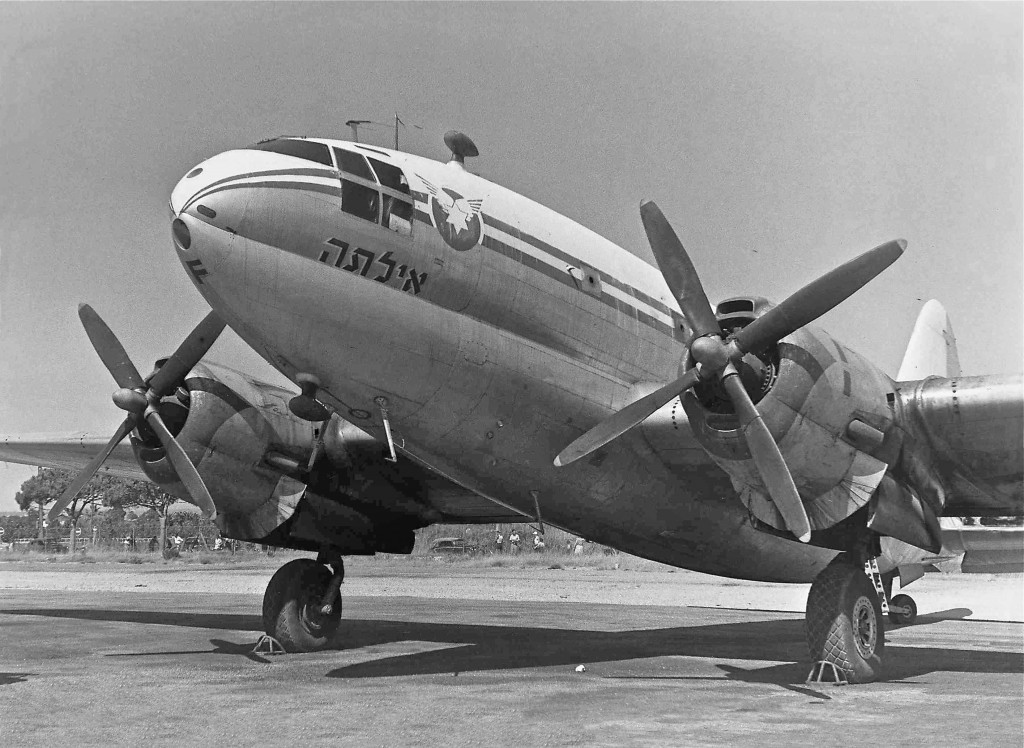
Regular scheduled flights from Tel Aviv to New York began in April 1951 upon EL AL’s acquisition of used L-49 Constellations. EL AL thereby became the first airline outside North America and Europe to operate scheduled trans-North Atlantic service. At the time, the voyage spanned 1-1/2 days between Tel Aviv and New York, including many stops, some for refueling.

Through the early Fifties, Israel faced austerity as it struggled to develop and to care for hundreds of thousands of refugee immigrants from Arab and other lands, and EL AL was unable to upgrade its small outdated fleet. In 1955, however, EL AL boldly became one of the first two airlines (along with BOAC) to order the new Bristol Britannia turboprop. EL AL introduced the Britannias on scheduled service in December 1957, enabling it to fly between London and New York nonstop in both directions. Award-winning EL AL ads proclaimed “No Goose—No Gander”, meaning no required stops at Goose Bay, Labrador or Gander, Newfoundland for refueling on trans-Atlantic flights. EL AL also excelled in operational efficiency on its trans-Atlantic Britannia flights, besting BOAC by setting several speed records on the route.

In 1961, EL AL introduced Boeing 707 pure jets, and soon established world records in its flights between Tel Aviv and New York – the first nonstop service between those cities, and the world’s longest nonstop commercial flight at the time (New York to Tel Aviv).
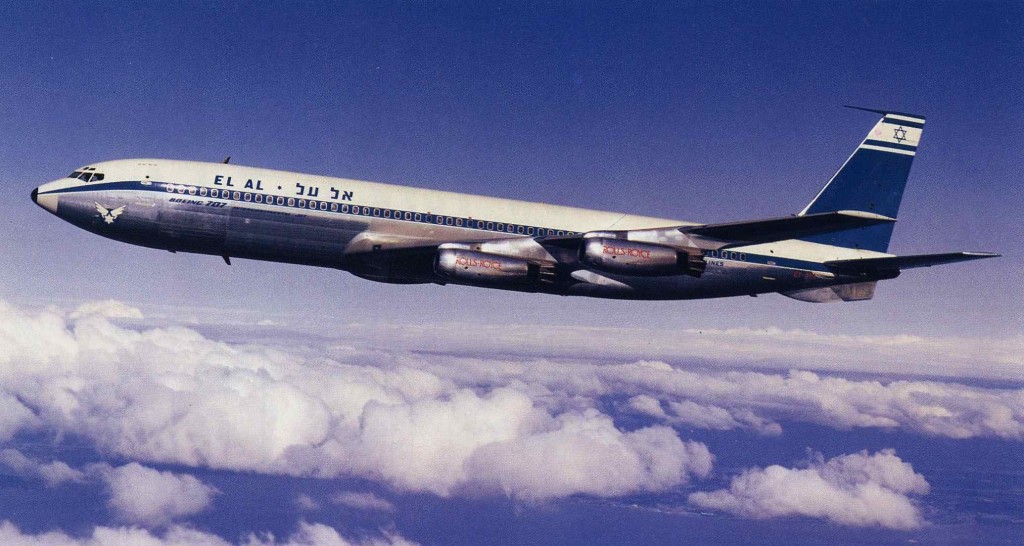
Boeing 720s were added in 1962, and by 1967 EL AL operated an all-Boeing 707/720 fleet. In fact, all of EL AL’s aircraft purchases since 1961 have been Boeing models. During the 1960s until 1968, EL AL remarkably operated with only seven aircraft – achieving unusually high operational efficiency through excellent maintenance and high aircraft utilization.
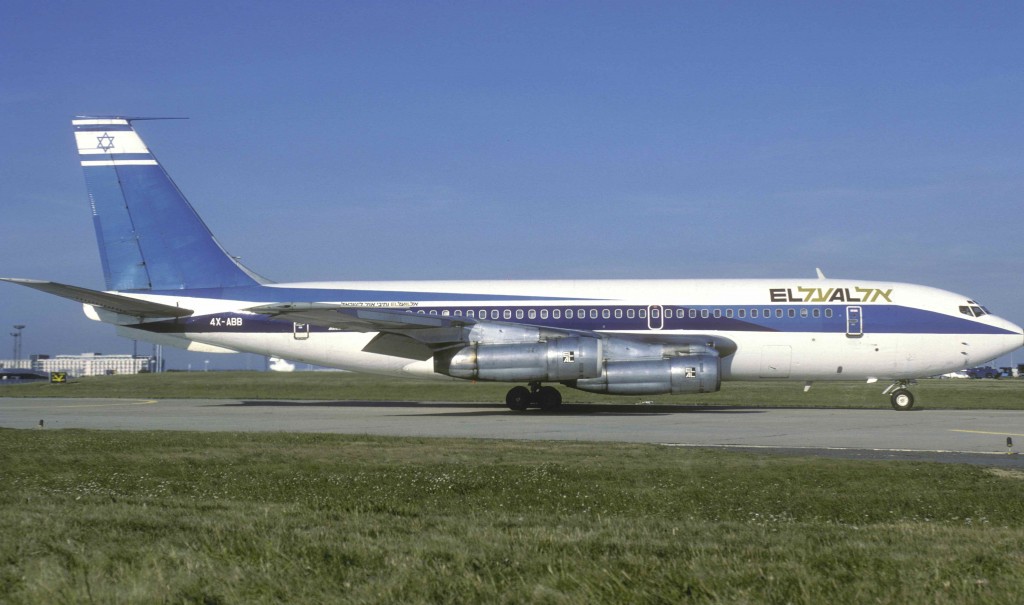
Wide-body jumbo 747s followed in 1971, enabling EL AL to fly nonstop, against the prevailing winds, from Tel Aviv to New York. The 747-200 became the mainstay of EL AL’s fleet, peaking at 10 aircraft of that type (seven passenger and three cargo) during 1995-97.
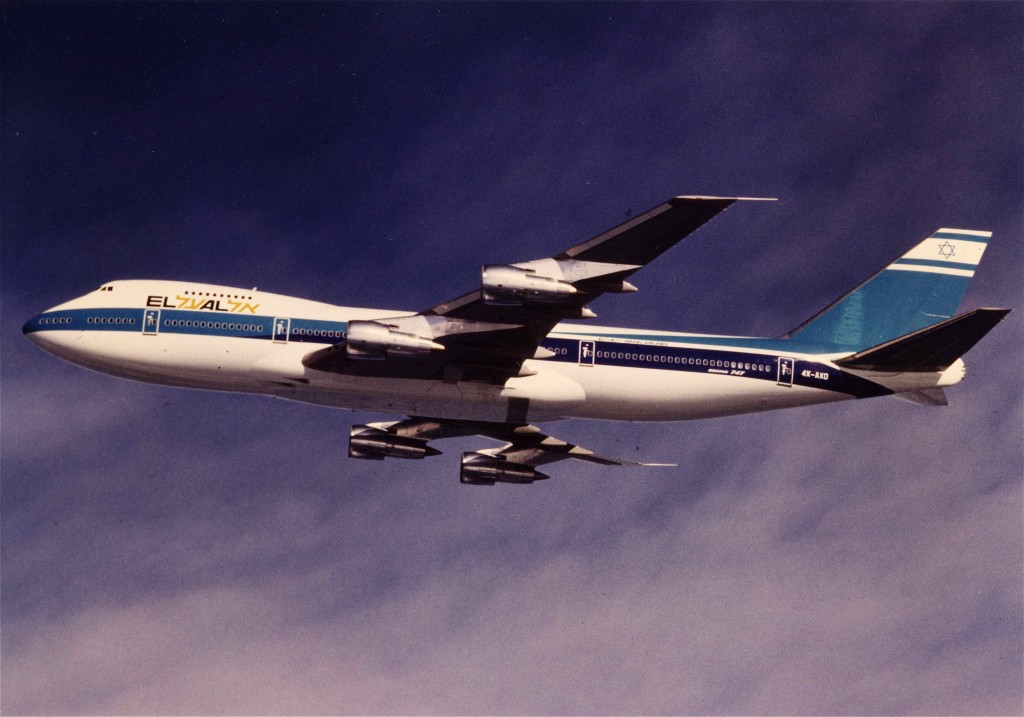
Two smaller 737-200s also joined the fleet, operating between 1980 and 1999. Today, all of EL AL’s 747-200s and 737-200s are fully retired.
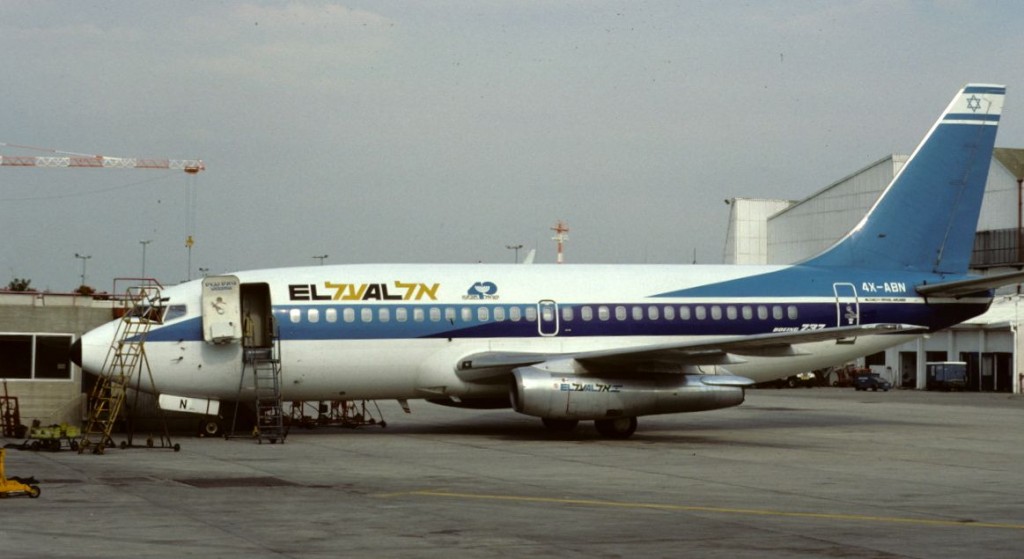
Wide-body Boeing 767-200s next entered EL AL’s fleet in 1983, featuring new computerized technology in flight deck avionics and greatly improved fuel economy. On 26 April 1984, with a 767-200 Extended Range (ER) flying nonstop Montreal to Tel Aviv, EL AL became the first scheduled airline to cross the North Atlantic on a revenue flight with a two-engine aircraft, under the U.S. FAA rule that mandated a route always within 60 minutes of an airport assuming operation on one engine. The number of 767-200s peaked at six, with the last leaving the active fleet in 2013.
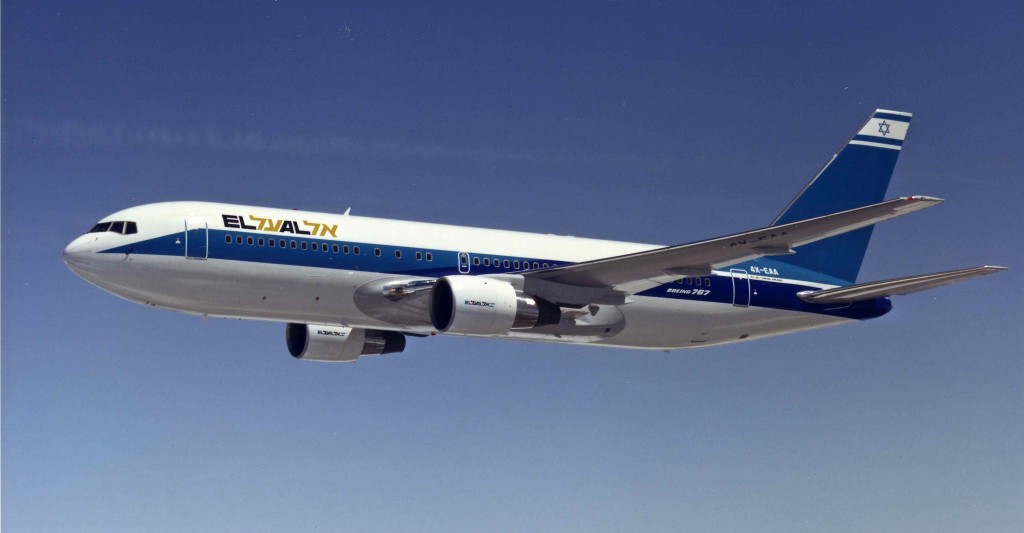
Smaller single-aisle Boeing 757s, mainly for European routes, entered the fleet starting in 1987, peaking at nine. The last was withdrawn from service in 2012.
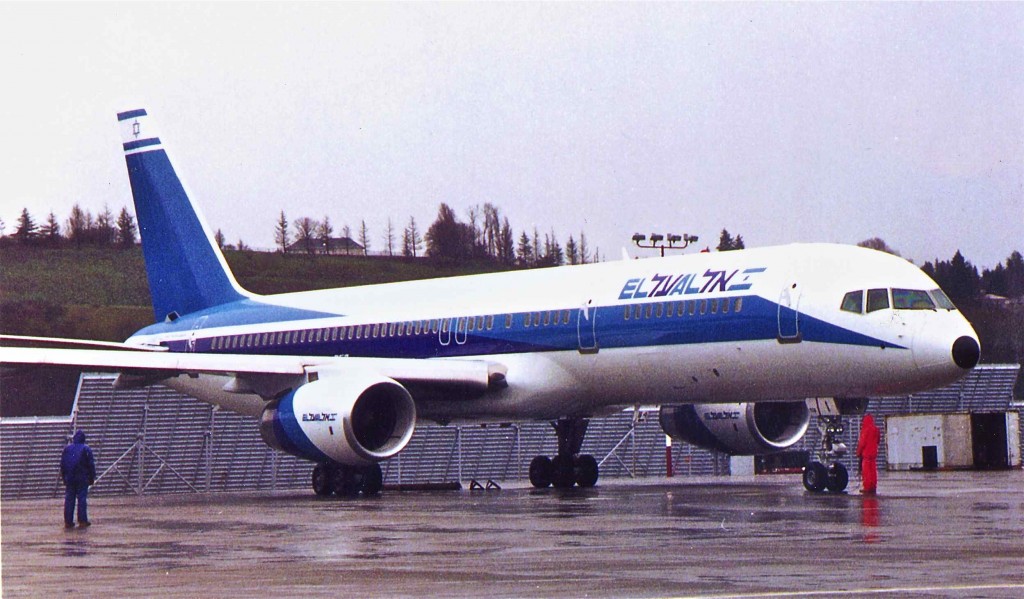
In 1994, EL AL gradually began replacing its 747-200 four-engine wide-body aircraft with Boeing’s improved version, the 747-400. The ‘400’ series featured numerous technological and structural improvements over the ‘200’, including the computerized ‘glass’ cockpit, more fuel efficient engines, winglets, and better air circulation and in-flight entertainment systems for passenger comfort. EL AL operated its last 747 flight (by 747-400, 4X-ELC) on 3 November 2019, bringing to an end the reign of the ‘Queen of the Skies’ aircraft in EL AL’s fleet. Its 747-400s have been replaced by EL AL’s new Boeing 787 ‘Dreamliner’ aircraft.
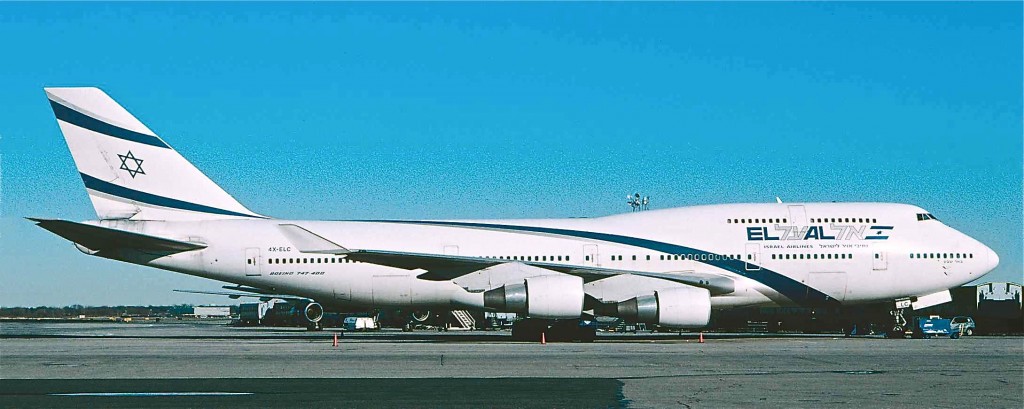
In 2004 EL AL started adding wide-body ‘extended range’ Boeing 767-300ER aircraft to its fleet, mainly for longer and medium-haul routes, and the number peaked at seven. The last aircraft of this type exited EL AL’s fleet in February 2019, replaced (like EL AL’s 747-400s) by EL AL’s new 787 ‘Dreamliner’ aircraft..
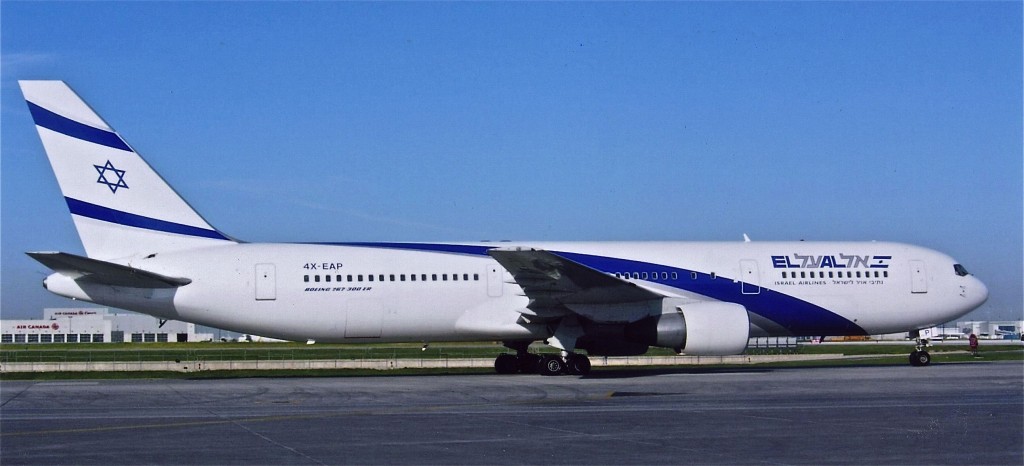
Also mainly for longer-haul routes, EL AL still has six wide-body Boeing Extended Range 777-200s (4X-ECA through ECF), acquired during 2001-2007. During the Covid-19 pandemic some of these 777s were utilized for cargo and others have been inactive. With the easing of the pandemic and an increase in air traveler volume, EL AL has returned three of its 777s to active passenger service and converted one to cargo.
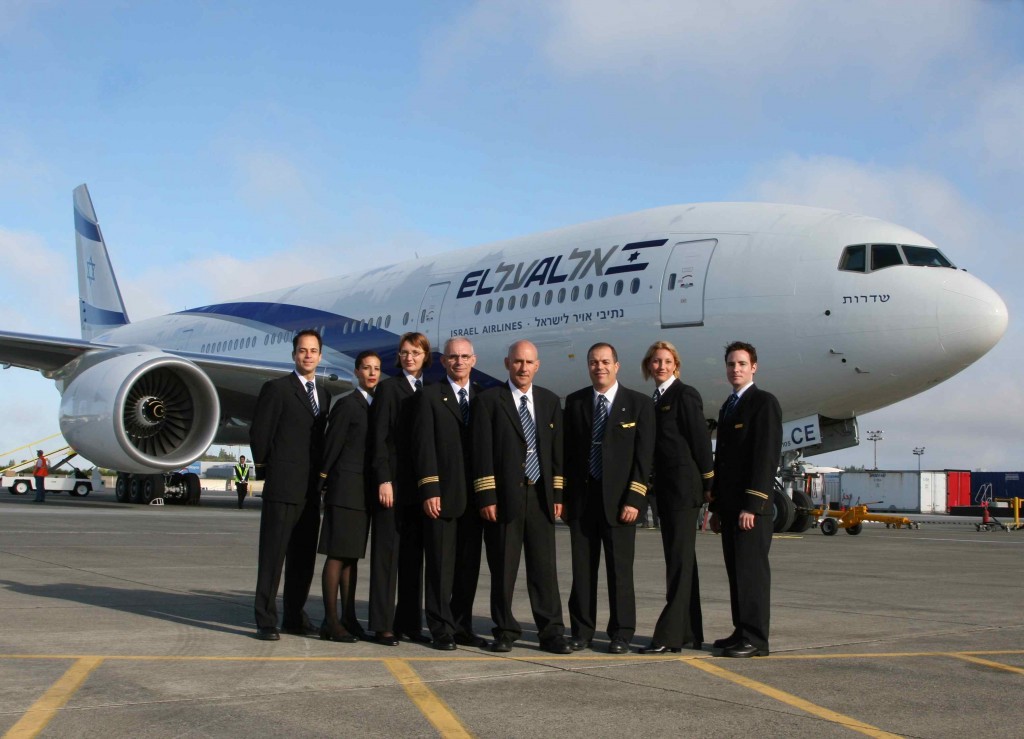
For short and medium routes, primarily between Tel Aviv and European destinations, EL AL has mainly employed (starting in 1999) Boeing 737 New Generation aircraft. It has 17 737-800s (registrations between 4X-EKA and EKU for passengers; and 4X-EKZ for cargo); and eight 737-900ERs acquired during 2013-2016 (registrations between 4X-EHA and EHI).
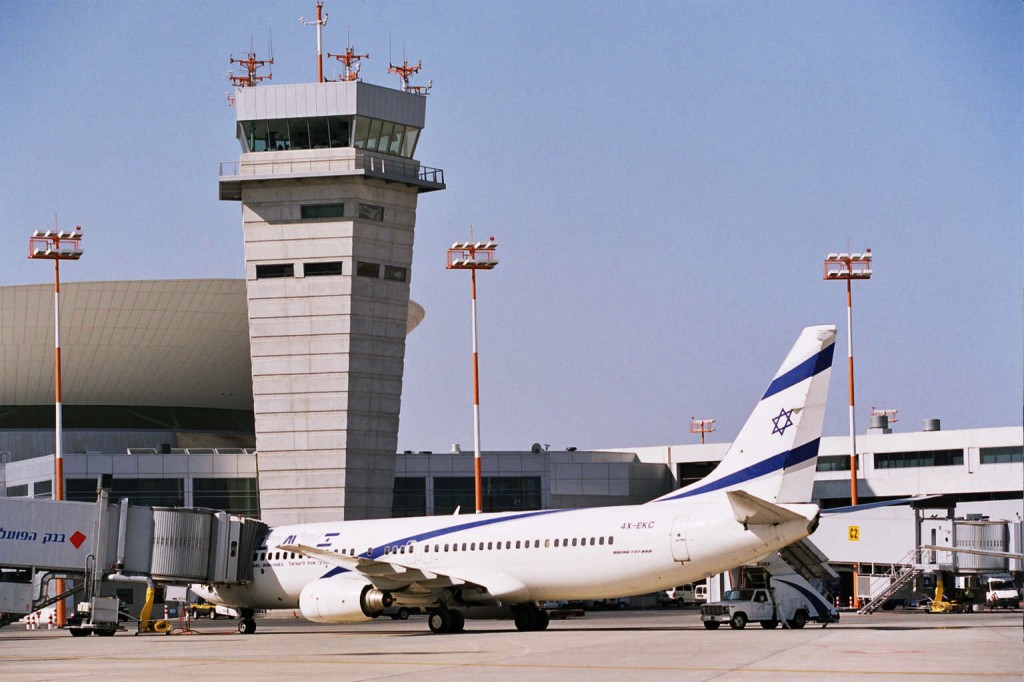
EL AL’s 737-900ERs feature the ‘Boeing Sky Interior’ for passenger comfort and many performance improvements, including lower environmental emissions and fuel consumption.
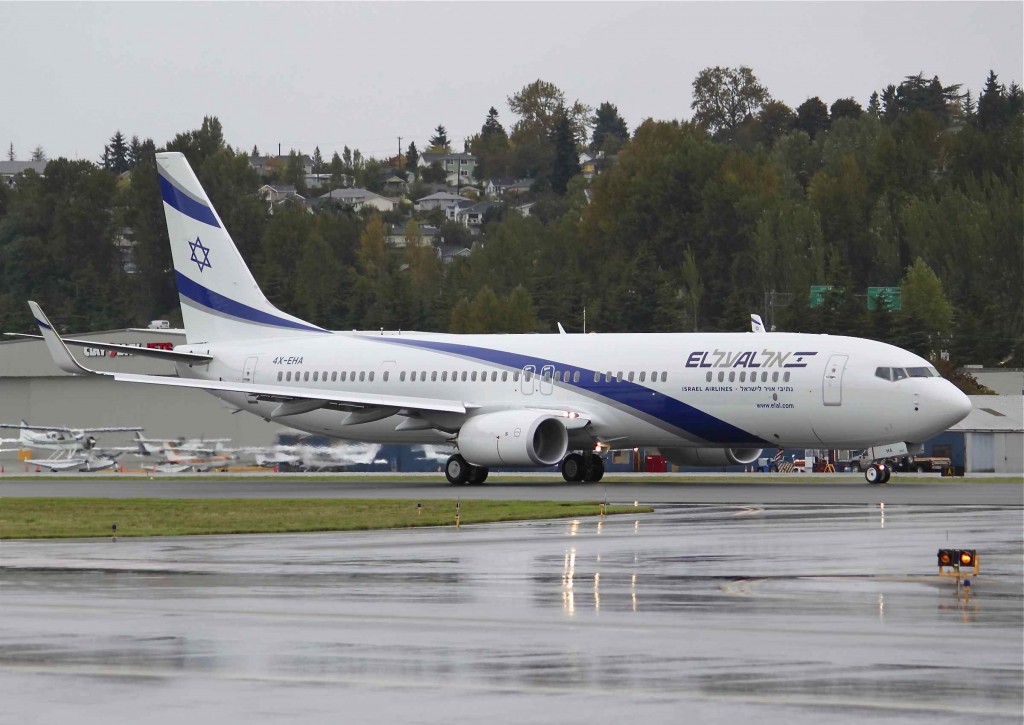
Long Haul Fleet Renewal. In 2015-16 EL AL placed orders for 16 new Boeing 787 ‘Dreamliner’ aircraft. Some of the 787s were purchased directly from Boeing, and others were leased. These modern aircraft have renewed and upgraded EL AL’s long-haul fleet, and have replaced all of EL AL’s 767-300s and 747-400s. Of the 16 787s ordered, EL AL decided to acquire 12 of the larger model 9 and four of the smaller model 8. The 12 larger 787-9s were received by EL AL between 22 August 2017 and 18 September 2019, with registrations ranging from 4X-EDA to EDM. The four 787-8s were received by EL AL between November 2019 and July 2023, with registrations 4X-ERA to ERD.
EL AL’s new 787 aircraft feature three classes of service — Business First, Premium (a new class of service), and Economy. The airline has posted YouTube videos showing the beautiful enhanced interior of each class.
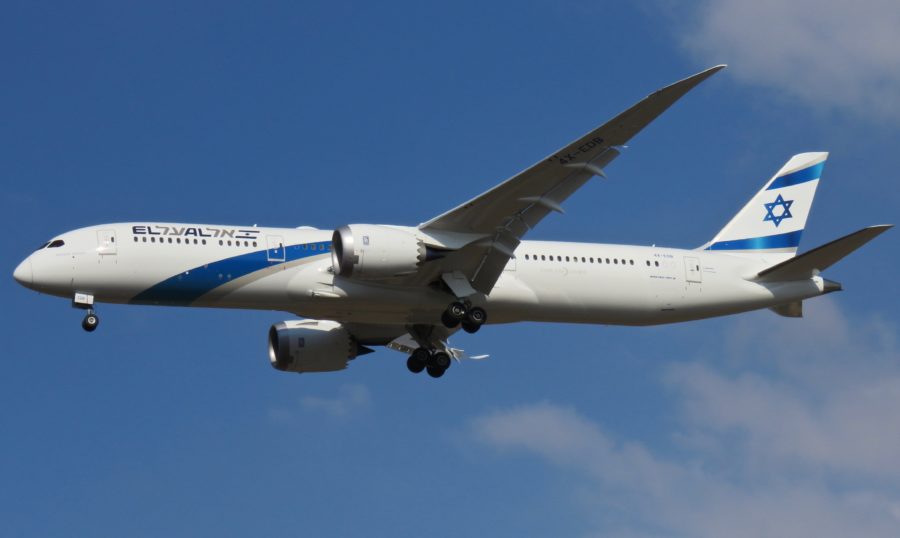
Privatization
In 2003 the Israeli government offered its shareholdings in EL AL for sale to private interests, primarily through the Tel Aviv Stock Exchange. The privatization included steps to protect vital Israeli interests, including a “golden share” in EL AL for the government, enabling it to maintain national air transport in times of war or other emergency, and Israeli citizenship requirements sufficient to maintain ownership and management control in the hands of Israelis.
By December 2004 the Israeli company Knafaim-Arkia Holdings acquired 40% of EL AL’s shares – enough to be the controlling shareholder – as the government’s percentage was by then reduced to 30%. Knafaim already owned a conglomerate of Israeli aviation, transport and tourism companies, including 75% of the Israeli airline Arkia. Israel’s antitrust authorities insisted that Arkia had to be sold as a condition to the acquisition of control of EL AL, and accordingly Knafaim sold Arkia in December 2005 to the Israeli Nakash family group.
EL AL, under Knafaim control, completed its privatization process in early 2005 by appointing a new independent management team and adopting a new strategic plan emphasizing “acquisitions of new aircraft, substantial investments in passenger service and comfort, and expansion of cargo, maintenance and tourism marketing worldwide”.
As a privatized airline since 2005, EL AL’s management adhered to financial responsibility and, together with the airline’s motivated employees, raised passenger service and comfort to a high standard. Nevertheless, profitability has widely fluctuated during this period, in part because rising fuel prices have offset increased efficiencies. EL AL also confronts increasingly stiff competition on its routes, both from much larger airlines that are parties to global alliances and from low-cost carriers, as well as geopolitical limits on the routes it can fly. To meet these challenges, EL AL has recently further enhanced its workforce efficiency and operational profile as well as its competitive product for all passengers. See also the section ‘Impact of Covid 19 and Change in Control’, below.
Airlifts and Lifeline
For over 70 years, EL AL has fulfilled many special roles for Israel and the Jewish people. Through massive immigrant airlifts, starting with Operation Magic Carpet which brought Yemenite Jews to Israel in 1949-50, and Operation Ali Baba in 1951 where EL AL flights rescued Jews fleeing oppression in Iraq, the airline recalled the Biblical prophecy of returning Jews to Israel “on eagles’ wings”. In 1990, EL AL started airlifting hundreds of thousands of Jews from the former Soviet Union and Eastern Europe in Operation Exodus, and in May 1991 it carried out the dramatic rescue of thousands of Ethiopian Jews in Operation Solomon. During this last airlift, EL AL set a world record for the most passengers ever carried on a single aircraft – 1,087 on a Boeing 747-200 from Addis Ababa to Israel – including a baby born en route.
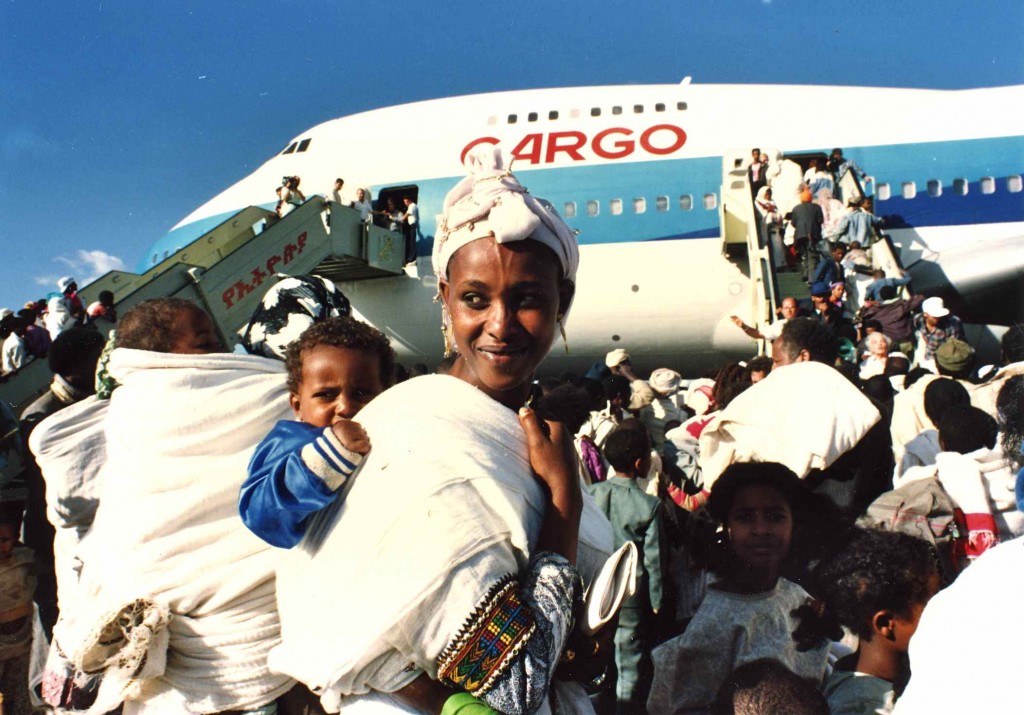
EL AL has also served as Israel’s vital lifeline to the world in times of crisis. For example, during the 1967 Six Day War and 1973 Yom Kippur conflict, as well as during the Gulf War in 1990 when Iraq bombarded Israel with Scud missiles, EL AL was the only airline that continued to fly passengers in and out of Israel. Many of its aircraft also operated around the clock to carry vital supplies. Again, in July 2014, when most foreign airlines stopped flying to Israel for several days during the conflict with Hamas in Gaza, EL AL continued to operate all its scheduled flights.
Security
Most travelers will name “security” as the feature that particularly distinguishes EL AL. Since 1968, following the occurrence of terrorist attacks against two of its aircraft, EL AL has plainclothes armed guards aboard each flight. The airline spends more than twice as much money as other airlines to protect its passengers and aircraft, and it maintains the most intensive and respected airline security system in the world. At home and abroad, pre-flight security checks and baggage inspections are carried out thoughtfully and with utmost care, utilizing the airline’s own modern detection equipment and specially trained personnel. EL AL aircraft are also equipped with classified Israeli security hardware.
Shabbat Flights
Even though privatized, EL AL has continued its policy of not operating scheduled passenger flights on Shabbat (the Jewish Sabbath which spans Friday sundown to Saturday sundown) or on major Jewish holidays. This means that EL AL must accomplish in 306 days a year what other passenger carriers do in 365. Needless to say, this is a big driver towards maintaining operational efficiency. Meanwhile, the airline continues, as it did under government control, to operate cargo flights, and perform aircraft maintenance, even on days of special religious significance.
Sun d’Or
Sun d’Or International Airlines was established in 1977 as a subsidiary of EL AL to operate charter flights. Over the years Sun d’Or has specialized in low-cost flights appealing to vacationers, working closely with tour operators and flying mainly to destinations in the Mediterranean area and western and eastern Europe. Originally it operated aircraft leased from EL AL together with EL AL crew and maintenance. However, due to Israeli government requirements, in recent years Sun d’Or’s flights have been directly operated by EL AL, with Sun d’Or serving as a marketing arm and brand name for EL AL with respect to both charter flights and scheduled flights to various destinations.
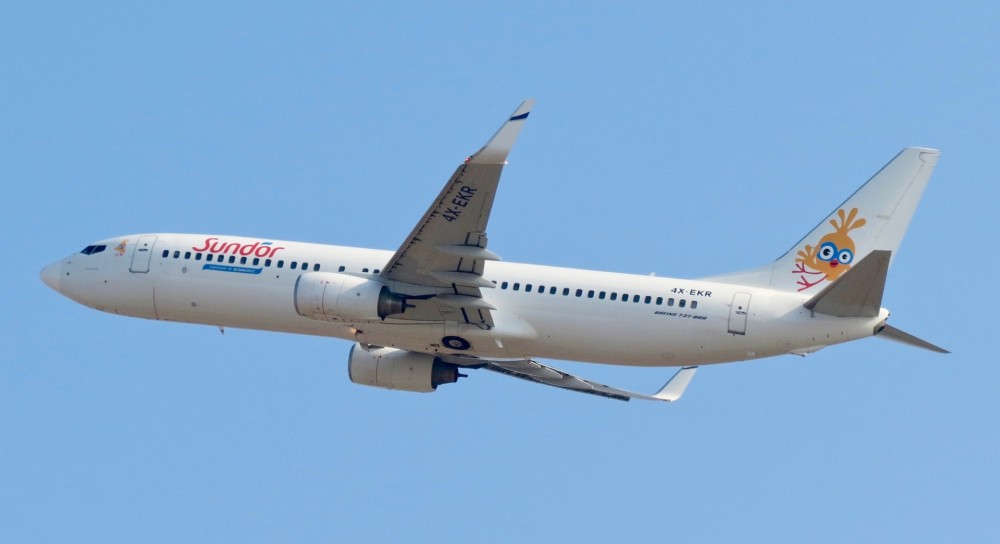
‘UP’ Airline Brand; Replacement with New Model Pricing
On 30 March 2014 launched a low-cost airline brand called ‘UP’. Four EL AL 737-800s were repainted into a new ‘UP’ livery, and they operated with EL AL crews, special ‘UP’ branding, and low-cost pricing to five scheduled European destinations. On 15 October 2018, however, EL AL merged the ‘UP’ brand back into its main EL AL operation, and replaced it with a new pricing model for EL AL’s flights between Tel Aviv and Europe, Asia and Johannesburg. The new model features three price options for Economy Class passengers — Flex, Classic and Lite, each with a different range of benefits.
First Flights Under the ‘Abraham Accords’
In the summer and fall of 2020, Israel entered into agreements with the United Arab Emirates, Bahrain and Morocco calling for the normalization of diplomatic and other relations between Israel and those predominantly Muslim nations. EL AL had the distinction of operating the first flights from Israel to each of those countries, carrying Israeli and U.S. delegates to implement these ‘Abraham Accords’. The flight from Tel Aviv to Abu Dhabi in the United Arab Emirates was the first by an Israeli airline to fly over Saudi Arabia.
Impact of COVID-19 and Change in Control
The COVID-19 pandemic caused EL AL, like most other airlines, to make dramatic cuts in service in early 2020. By April 2020, in part due to severe Israeli Government restrictions on entry of travelers to Israel, EL AL suspended regularly scheduled passenger service, furloughed over 80% of its employees and deferred the planned inauguration of scheduled service to new destinations. Meanwhile, EL AL carried out special flights to bring Israelis stranded abroad back to Israel (including its longest flight ever, round trip to Melbourne, Australia), and expanded its cargo flights. Following a general collapse of passenger traffic due to the virus, labor disputes, and continued losses, EL AL shut down all its flights at the end of June 2020.
Meanwhile, the airline engaged in difficult and complex negotiations involving the Israeli Government, Israeli banks, the airline’s workers’ committees and third-party investors, for financial assistance to overcome the COVID-19’s impact on air travel.
— Change in Control:
On 16 September 2020, In cooperation with the Israeli Government, EL AL carried out on the Tel Aviv Stock Exchange a $150 million public offering of additional shares of the airline’s capital stock. The company Kanfei Nesharim (‘Wings of Eagles’) Aviation of Israeli citizen Eli Rozenberg, son of US-based businessman Kenny Rozenberg, purchased over $100 million of EL AL shares in the offering, thereby acquiring 43% ownership of EL AL, enough to control the airline, and received final approval of the Government. The State of Israel purchased $33 million of shares for a 14% interest.
Thereafter, EL AL reached efficiency agreements with its workers’ committees and carried out public offerings of additional shares of stock and stock options to raise needed cash, the new controlling shareholder made additional financial commitments to the airline, and on 18 March 2021 a government financial assistance package was agreed to, tied to reductions in EL AL’s staff, flights, routes and aircraft during the near term.
The funds from these financings enabled EL AL to resume scheduled flights in October 2020 to several of its core destinations in the U.S. and Europe. However, the Covid-19 health situation in Israel grew worse, and new travel restrictions and nationwide lockdowns were imposed. Tel Aviv’s Ben-Gurion Airport actually shut down completely to passenger flights between 26 January and 6 March 2021. Finally, following improvement in the virus situation in Israel in Spring 2021, EL AL started gradually resuming passenger flights and implementing its efficiency plan aimed at returning the airline to stability and profitability, consistent with maintaining customer service and strong security. EL AL’s operations and financial results then steadily improved. It returned to profitability In the last quarter of 2022, and it has remained profitable since then.
Routes and Networks
All of EL AL’s regular scheduled flights are flown nonstop, point-to-point between Tel Aviv and over 30 cities in foreign countries. Its nonstop flights between Tel Aviv and Los Angeles, California, averaging 15 hours and utilizing ‘Dreamliner’ 787-9s, are among the longest in the world. EL AL also utilizes the brand of its subsidiary ‘Sun d’Or’ to serve several additional destinations each year on a scheduled, seasonal or charter flight basis.
EL AL’s route network has been modified frequently since early 2020, due to the COVID-19 pandemic, changes in competition, fleet size limitations, political relations with certain Arab countries and, most recently, the war in Gaza precipitated by the 7 October 2023 surprise attack by Hamas on Israel and their massacre of over 1,300 Israelis and kidnapping of over 200 Israeli hostages. Flights to several cities have ended, while new destinations have been added. As of late May 2024, EL AL was operating regular scheduled flights from Tel Aviv to 34 destinations — 24 in western and eastern Europe, six in North America (New York, Newark, Boston, Miami, Fort Lauderdale and Los Angeles), and four in Asia (Dubai, Bangkok, Phuket and Tokyo); and nine additional destinations in Europe, either scheduled or chartered, under the brand of its subsidiary Sun d’Or.
The aforementioned attack by Hamas on Israel and resultant Gaza war has led to the vast majority of airlines terminating their flights to Israel during the war. EL AL, however, has continued flying to and from Israel without interruption. As demand for service from different countries has significantly changed during the war, EL AL has had to change its schedules, reducing or eliminating flights to certain destinations, while increasing the number of flights to other places such as those in the United States.
EL AL is not presently a member of any worldwide airline alliance. However, it does participate in ‘codeshare’ commercial agreements with several airlines. A codeshare arrangement allows the sharing airlines to market one another’s flights on certain routes. A seat can be purchased on one airline but the flight can actually be operated in at least one flight segment by the cooperating airline under a different flight number or code. EL AL currently has codeshare arrangements in respect of certain flight itineraries originating or terminating in Tel Aviv, with several airlines, including a major one effective from 18 December 2023 with Delta Air Lines.
Steps to Increase Fleet
To meet increased demand, EL AL has embarked on a fleet ‘replacement and renewal campaign’. The airline plans to expand its wide body fleet of Boeing 787 Dreamliners from its present 16 aircraft to at least 22. Agreements have been signed for three additional 787s, one expected to arrive in 2024 after May and a further two at the end of 2025 or start of 2026. Also, a tentative agreement has been signed, awaiting finalization, for the acquisition of three more 787s for delivery in 2029 and 2030, with options to purchase up to six additional 787s.
Regarding EL AL’s narrow body passenger fleet, currently consisting of 24 Boeing 737-800s/900s utilized on short and medium-range routes, the airline has taken steps to replace most of that fleet and expand it to between 28 and 31 aircraft from 2028 to 2030. In August 2024 EL AL placed an order with Boeing for 20 737 MAX new aircraft, some to be purchased and some leased, with options to acquire up to 11 more, and with the first planes to arrive in 2028. This is EL AL’s largest single order of aircraft in its history.
For a detailed illustrated history of EL AL, see the updated edition of the book authored by Marvin G. Goldman, ‘EL AL: Israel’s Flying Star’, on this website.
Last updated 20 August 2024.
Copyright 2011-2024, Marvin G. Goldman
